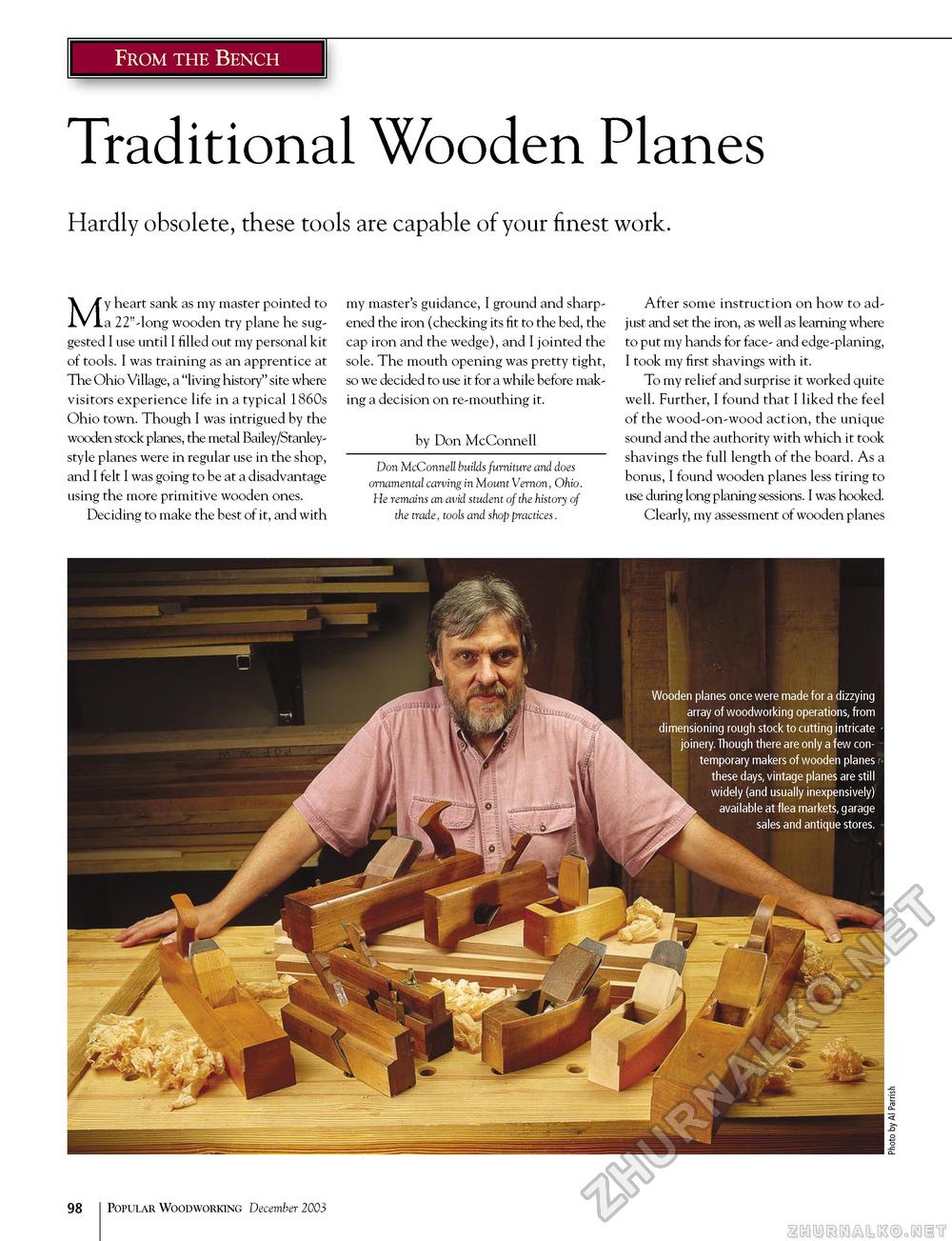Popular Woodworking 2003-12 № 138, страница 97
From the Bench Traditional Wooden Planes Hardly obsolete, these tools are capable of your finest work. My heart sank as my master pointed to a 22"-long wooden try plane he suggested I use until I filled out my personal kit of tools. I was training as an apprentice at The Ohio Village, a "living history" site where visitors experience life in a typical 1860s Ohio town. Though I was intrigued by the wooden stock planes, the metal Bailey/Stanley-style planes were in regular use in the shop, and I felt I was going to be at a disadvantage using the more primitive wooden ones. Deciding to make the best of it, and with my master's guidance, I ground and sharpened the iron (checking its fit to the bed, the cap iron and the wedge), and I jointed the sole. The mouth opening was pretty tight, so we decided to use it for a while before making a decision on re-mouthing it. by Don McConnell Don McConnell builds furniture and does ornamental carving in Mount Vernon, Ohio. He remains an avid student of the history of the trade, tools and shop practices. After some instruction on how to adjust and set the iron, as well as learning where to put my hands for face- and edge-planing, I took my first shavings with it. To my relief and surprise it worked quite well. Further, I found that I liked the feel of the wood-on-wood action, the unique sound and the authority with which it took shavings the full length of the board. As a bonus, I found wooden planes less tiring to use during long planing sessions. I was hooked. Clearly, my assessment of wooden planes 98 Popular Woodworking December 2003 |








